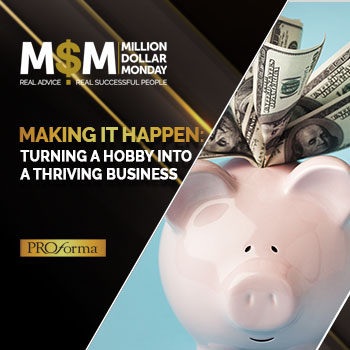According to the National Restaurant Association, the restaurant industry will make $1.7 billion in 2012—per day. That translates to $632 billion a year (4 percent of the U.S. gross domestic product), more than $650 thousand per location and a whole lot of spinach and artichoke dip.
Of course, if you’ve ever waited an hour and forty-five minutes for a table at the local Outback on a Friday night, you already know what the dollar figures suggest: Where there are burgers and beer, there are people. Lots of them.
But for bars and restaurants, it’s not quite as simple as switching the neon sign to “open” and sitting back as customers fork over hundred-dollar bills in exchange for medium-rare meats. With more than 970 thousand bars and restaurants in the U.S., individual locations must constantly market themselves in order to stand out and earn repeat customers. That makes the restaurant industry an all-you-can-eat buffet of sales opportunity—if distributors know where, how and what to sell. Read on for some food for thought on selling to bars and restaurants.
Location, Location …
The huge variety of restaurant locations can make breaking into the bars and restaurants market a daunting task. Is it better to target the mom-and-pop pizza place or the nationwide chain? The 35-seat cafe or 350-person buffet? The local dive or the upscale bistro? According to Laurie Oftedahl, marketing and product planner for Carlson Craft Binder Division, North Mankato, Minn., it doesn’t matter.
“Opportunity exists at all levels of business,” she said. “You want to understand that what appeals to a small local business may differ from what appeals to a large franchise or nationwide chain—or should I say, how you present it may differ.”
She gave the example of business card holders. Where a small restaurant or bar might give away a personalized business card holder containing a gift card or coupon for discounts on future meals, a large restaurant might use the holder to distribute loyalty cards for frequent customers. “The product itself is the same, but the value for the small business is different than for the large business,” she added.
“Free Things and Saving Money”
You don’t just need to know how to present products to a restaurant—you also need to know what products to pitch. Ian De Fabio, restaurant manager at Philadelphia Bar and Restaurant, Philadelphia, noted that hats, T-shirts and other apparel items might seem like a good idea based on their visibility and high perceived value, but generally don’t see much use. “Most of them wind up sitting in boxes,” he said.
Instead, he suggested items with a high turnover rate, or items bars and restaurants will need on a daily basis. “We use a ton of branded pint glasses, check presenters and coasters, as well as a lot of back-bar promo material such as lighted displays, signs, etc.,” De Fabio said. “Glasses and coasters are in high demand because they are used with almost every drink served.”
Ron Rosencrans, MAS, president of ProRose Inc., Stamford, Conn., recommended another approach. “Many [distributors] tell us they sell to bars, and want samples of our napkin holder,” he explained. “A typical bar can use four to five napkin holders—not much of an order. The distributor needs to come up with items that will drive business at that particular location or chain.”
Rosencrans explained that it has to do with competition from the big liquor and beverage companies, whose own branding strategies involve giving bars and restaurants promotional items for free.
De Fabio mentioned this as well. “We constantly have beer and liquor distributors that give us branded coasters and pint glasses. They also give us spill mats for the bar, napkin and straw caddies, etc.,” he said.
Competing directly with Big Beverage marketing budgets might not be the best strategy for distributors—given the choice between “free” and “any amount of money,” buyers for bars and restaurants are likely to choose the former. “People love free things and saving money. It’s the main point of pain for most bars and restaurants,” De Fabio stated. “Solve that and you will likely have a customer.”
So how can distributors solve that problem? De Fabio suggested offering a buy-back program or another way to subsidize the cost of carrying the product, but that may not always be practical—especially if beverage companies are still offering products free of charge.
Rosencrans offered one idea. “Distributors need to go beyond these products and try to sell items that will draw in patrons or get patrons to buy more food and drink,” he said. He advised pitching items that restaurants can give patrons to take home, such as shot glasses or miniature bar games, that will continue to generate impressions after the customer has left the restaurant. “Free cup with drink promotions are popular,” he noted. “A large restaurant chain used [one of our cups] for a kids drink promotion and gave the cup and straw away with the drink.”
Oftedahl gave a final tip for distributors. “Weigh the time you will need to spend against the results you are looking for. Very few restaurants or bars will purchase [an item] on the first visit,” she said. “Use the visits as an opportunity to build a relationship by putting the customer first. Have confidence, be creative and be a conversationalist.”



